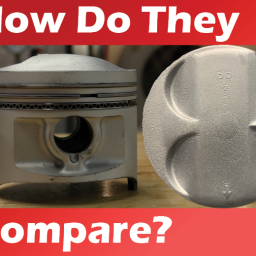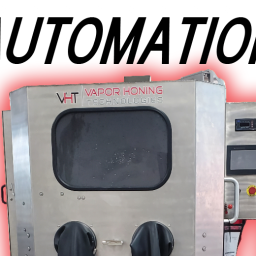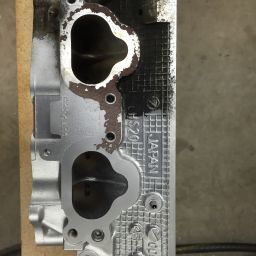Pressure Pot vs. Siphon Sandblasting: A Comprehensive Comparison
Sandblasting, also known as abrasive blasting, is a crucial process in various industries for cleaning, smoothing, or shaping surfaces by propelling abrasive materials at high velocity. Two of the most common methods are pressure pot blasting and siphon (or suction) blasting. Each has distinct advantages and disadvantages, making them suitable for different applications. This blog will delve into the intricacies of both methods, helping you make an informed decision about which technique is best for your needs. If you have questions about pressure pot vs siphon sandblasting after this blog please reach out to our team to learn more. To watch the full YouTube video click here https://youtu.be/aR9ucYUMOB4?si=UoOX9qRddTe51r-u
Understanding the Basics
Pressure Pot Blasting:
Pressure pot blasting involves a pressurized vessel (the pot) that stores the abrasive material. This pot is filled with a mixture of air and abrasive, which is then forced out through a nozzle by high pressure. The process is highly efficient and effective, delivering consistent and powerful abrasive streams that quickly remove surface contaminants or shape materials.
Siphon (Suction) Blasting:
In siphon blasting, the abrasive material is not pressurized. Instead, it is drawn into the air stream using a suction force created by a high-velocity air stream passing over a siphon tube. This method relies on the Venturi effect, where the fast-moving air creates a vacuum that pulls the abrasive into the stream, mixing it with the air and propelling it toward the surface to be treated.
Efficiency and Performance
Pressure Pot Blasting:
One of the primary advantages of pressure pot blasting is its efficiency. By delivering abrasive material at high pressure, this method can clean surfaces much faster than siphon blasting. The high-pressure stream ensures that the abrasive particles hit the surface with significant force, making it ideal for heavy-duty applications such as removing tough coatings, rust, or scale from metal surfaces.
Additionally, pressure pot blasting provides a more consistent and controlled flow of abrasive material. This consistency is crucial for achieving uniform surface finishes, which is particularly important in applications where precise surface preparation is required, such as in automotive refinishing or metal fabrication.
Siphon Blasting:
While siphon blasting is generally less powerful than pressure pot blasting, it has its own set of advantages. It is typically more suitable for lighter applications, such as cleaning delicate surfaces, removing minor rust, or preparing surfaces for painting. Siphon blasting is less aggressive, making it a better choice for tasks where preserving the integrity of the underlying material is essential.
Moreover, siphon blasting is easier to set up and operate. It does not require a pressurized vessel, which simplifies the equipment and reduces the risk of handling high-pressure components. This ease of use makes siphon blasting a popular choice for smaller shops or occasional use where the high power of a pressure pot system is not necessary.
Cost Considerations
Initial Investment:
Pressure pot blasting systems generally have a higher initial cost due to the complexity of the equipment. The pressurized vessel, specialized nozzles, and robust compressors required for pressure pot blasting contribute to this higher upfront expense. However, this initial investment can be justified by the increased efficiency and productivity of the system, especially for high-volume or heavy-duty applications.
In contrast, siphon blasting systems are more affordable to purchase and maintain. Their simpler design means fewer components that can wear out or require maintenance, leading to lower operating costs over time. For businesses with budget constraints or those that do not need the power of a pressure pot system, siphon blasting offers a cost-effective alternative.
Operational Costs:
Operational costs for pressure pot blasting can be higher due to the increased consumption of abrasive material and the need for more powerful compressors. However, the efficiency of the process often offsets these costs by reducing the time required to complete a job, which can lead to lower labor costs and higher throughput.
Siphon blasting typically uses less abrasive material, which can reduce material costs. Additionally, the lower power requirements of siphon systems mean they can operate with smaller, less expensive compressors. For businesses with lower blasting volumes or less demanding applications, these cost savings can be significant.
Versatility and Application
Pressure Pot Blasting:
Pressure pot blasting is highly versatile and can handle a wide range of abrasive materials, including heavy-duty media like steel grit, aluminum oxide, and glass beads. This versatility makes it suitable for a broad spectrum of applications, from industrial cleaning and surface preparation to peening and finishing.
The high power and consistency of pressure pot blasting make it ideal for applications that require a high degree of precision and control. For example, in the aerospace industry, pressure pot blasting is used to prepare surfaces for coatings and to peen metal components to improve their fatigue resistance.
Siphon Blasting:
Siphon blasting is best suited for lighter applications and materials, such as sand, soda, or walnut shells. It is often used for tasks like cleaning soft metals, wood, or masonry, where a gentler touch is needed to avoid damaging the surface.
Siphon blasting is also advantageous for jobs that require frequent changes of abrasive material. The simple design of the siphon system allows for quick and easy swapping of media, making it a flexible choice for multi-material applications or projects that require different abrasive types for different stages of the process.
Safety Considerations
Pressure Pot Blasting:
The higher pressures involved in pressure pot blasting necessitate strict safety protocols. Operators must be trained to handle the equipment safely and be aware of the risks associated with high-pressure systems, such as the potential for hose or vessel ruptures. Personal protective equipment (PPE), including blast helmets, gloves, and protective clothing, is essential to protect operators from the high-velocity abrasive stream and potential inhalation hazards.
Additionally, pressure pot systems must be regularly inspected and maintained to ensure they operate safely. This maintenance includes checking for wear and tear on hoses, nozzles, and the pressure vessel, as well as ensuring the compressor is functioning correctly.
Siphon Blasting:
Siphon blasting operates at lower pressures, which generally makes it safer to use than pressure pot blasting. The reduced risk of equipment failure and lower force of the abrasive stream decrease the likelihood of serious injuries. However, proper PPE is still necessary to protect operators from abrasive particles and dust.
The simplicity of the siphon system also means there are fewer components to inspect and maintain, reducing the overall risk of equipment-related accidents. This ease of maintenance contributes to the safety and reliability of siphon blasting systems.
Environmental Impact
Both pressure pot and siphon blasting can generate significant amounts of dust and waste, which can impact the environment and require proper management. However, there are differences in how these systems handle abrasive media and the potential environmental consequences.
Pressure Pot Blasting:
Pressure pot systems typically use more abrasive material due to their higher efficiency and power. This increased consumption can lead to more waste and higher disposal costs. Additionally, the high-velocity abrasive stream can generate a large amount of dust, which may require containment and filtration systems to prevent environmental contamination and protect worker health.
To mitigate these impacts, many pressure pot systems are designed to recycle and reuse abrasive material. This recycling capability can significantly reduce waste and lower material costs, making the system more environmentally friendly. Properly maintained containment and ventilation systems are also essential to minimize dust and airborne contaminants.
Siphon Blasting:
Siphon blasting generally uses less abrasive material, which can result in less waste and lower disposal costs. The lower power and slower rate of material removal also mean that less dust is generated, reducing the need for extensive containment and filtration systems.
However, the type of abrasive used in siphon blasting can still impact the environment. Natural abrasives like sand or walnut shells are biodegradable and less harmful, while synthetic abrasives may require special disposal methods. Choosing environmentally friendly abrasives and implementing proper waste management practices can help minimize the environmental impact of siphon blasting.
Conclusion
Both pressure pot and siphon sandblasting have their unique advantages and are suited for different applications. Pressure pot blasting offers higher efficiency, consistency, and power, making it ideal for heavy-duty and high-precision tasks. It is, however, more expensive and requires more stringent safety and maintenance protocols.
Siphon blasting, on the other hand, is more cost-effective, easier to operate, and safer, making it a good choice for lighter applications and smaller operations. Its lower environmental impact and versatility in handling various abrasives add to its appeal.
When choosing between pressure pot and siphon blasting, consider your specific needs, budget, and the nature of the tasks you need to perform. By understanding the strengths and limitations of each method, you can make an informed decision that will optimize your blasting operations and ensure the best results for your projects.
Checkout our YouTube channel here https://www.youtube.com/@VaporHoningTechnologies to learn more about different blasting techniques
To see our full price guide click here https://vaporhoningtechnologies.com/price-guide/








